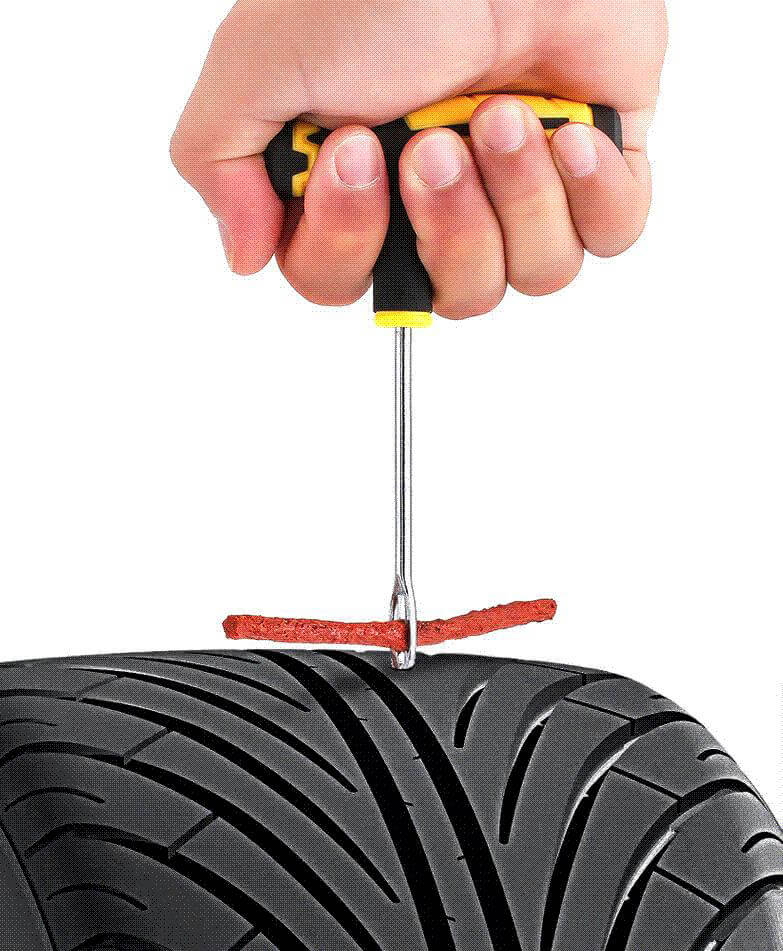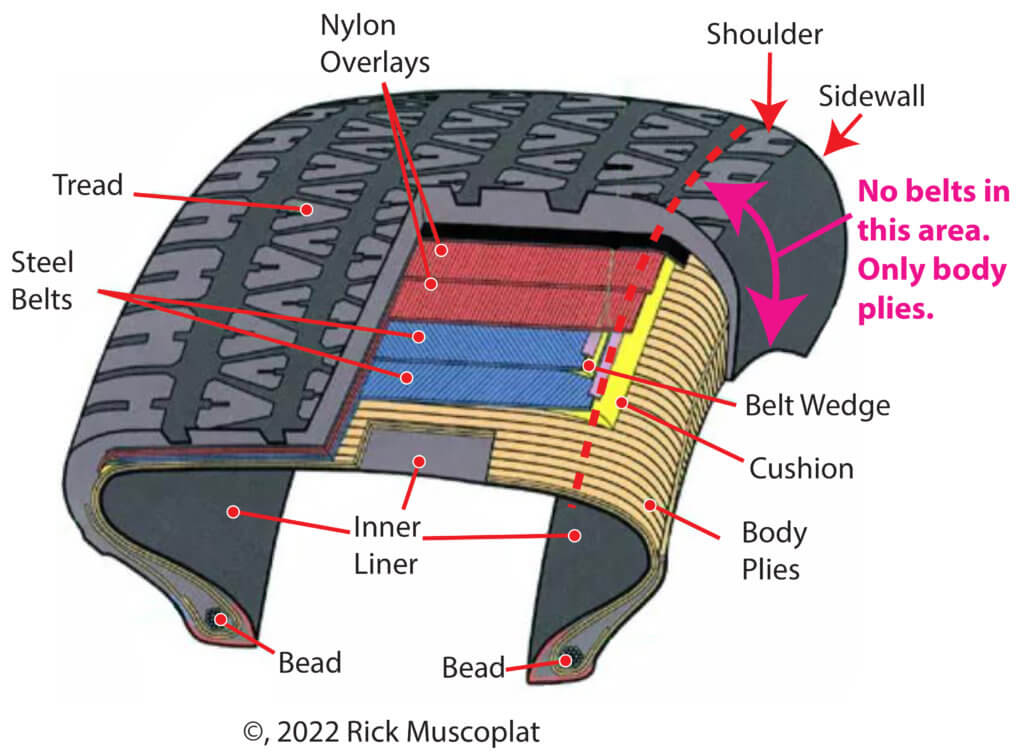Why it’s dangerous to plug a tire instead of using a tire patch
Plugging a tire is a temporary fix, not a complete (or safe) repair
Many drivers use rope style tire plugs as a quick fix, believing it to be a permanent repair. It’s not. It never has been and never will be. The only safe way to repair a puncture is with a combo tire patch that seals the puncture hole while also sealing the tire’s inner liner.
Why tire plugs are just a temporary fix
First, all tire plug manufacturers state right on the package that plugging should be considered a
temporary repair and that you must get the tire properly repaired with a patch. Tire plugs are not designed to provide a lasting repair; they merely fill the hole without addressing the interior tire damage. In other words, it’s a partial repair.
This means that over time, the plug may become less effective, leading to air leakage and the need for frequent re-inflation. Additionally, the plug may begin to deteriorate due to exposure to the elements, further diminishing its reliability. Relying on a temporary fix can leave you vulnerable to unexpected tire failures, especially during critical moments such as high-speed driving or inclement weather conditions.
A tire plug is an incomplete seal
Even when performed correctly, plugging might not always create a perfect seal. If the puncture is too large, irregularly shaped, a plug might not provide an adequate seal against air leakage. This incomplete seal can lead to slow leaks, requiring frequent re-inflation and causing frustration for drivers. Moreover, a compromised seal can result in reduced tire performance and fuel efficiency, as the tire struggles to maintain proper inflation levels.
Plugging a tire without an tire patch poses a safety risk
Plugged tires are more susceptible to sudden blowouts, which can lead to loss of control and accidents. When driving at high speeds, the heat generated by friction can cause the plug to soften and eventually fail, leading to a sudden loss of air pressure. This can be particularly dangerous on highways and busy roads, where quick and accurate reactions are crucial for avoiding collisions. Choosing a more reliable and durable repair method, such as a proper patch or replacement, helps mitigate these safety risks.
Plugging a tire without an internal patch will void the tiremaker’s warranty
This one is really simple; use a tire plug without getting a proper tire patch will automatically void your tire warranty. Tire manufacturers have guidelines for repairing tires, and using unauthorized methods like tire plugs will render your warranty null and void. This means that if the tire sustains further damage or experiences failure due to a plug, you might be left to cover the costs of repair or replacement out of your own pocket.
Understand that a puncture compromises the tire’s structural integrity
One of the primary concerns when it comes to plugging a tire is the potential compromise of its structural integrity. When a tire is punctured, it’s not just the rubber that’s affected; the internal layers of fabric and steel belts are also damaged. Plugging a tire with a rope plug only addresses the surface issue and doesn’t account for the damage that might have occurred deeper within the tire’s structure.
This compromise in structural integrity can lead to instability, increased risk of blowouts, and decreased handling performance. Even if the plug seems to hold up initially, the tire’s overall strength and safety might be compromised. However, a mushroom tire plug that installs inside the tire, reinforces the structural integrity of the tire liner while keeping water out of the belts.
©, 2023 Rick Muscoplat


